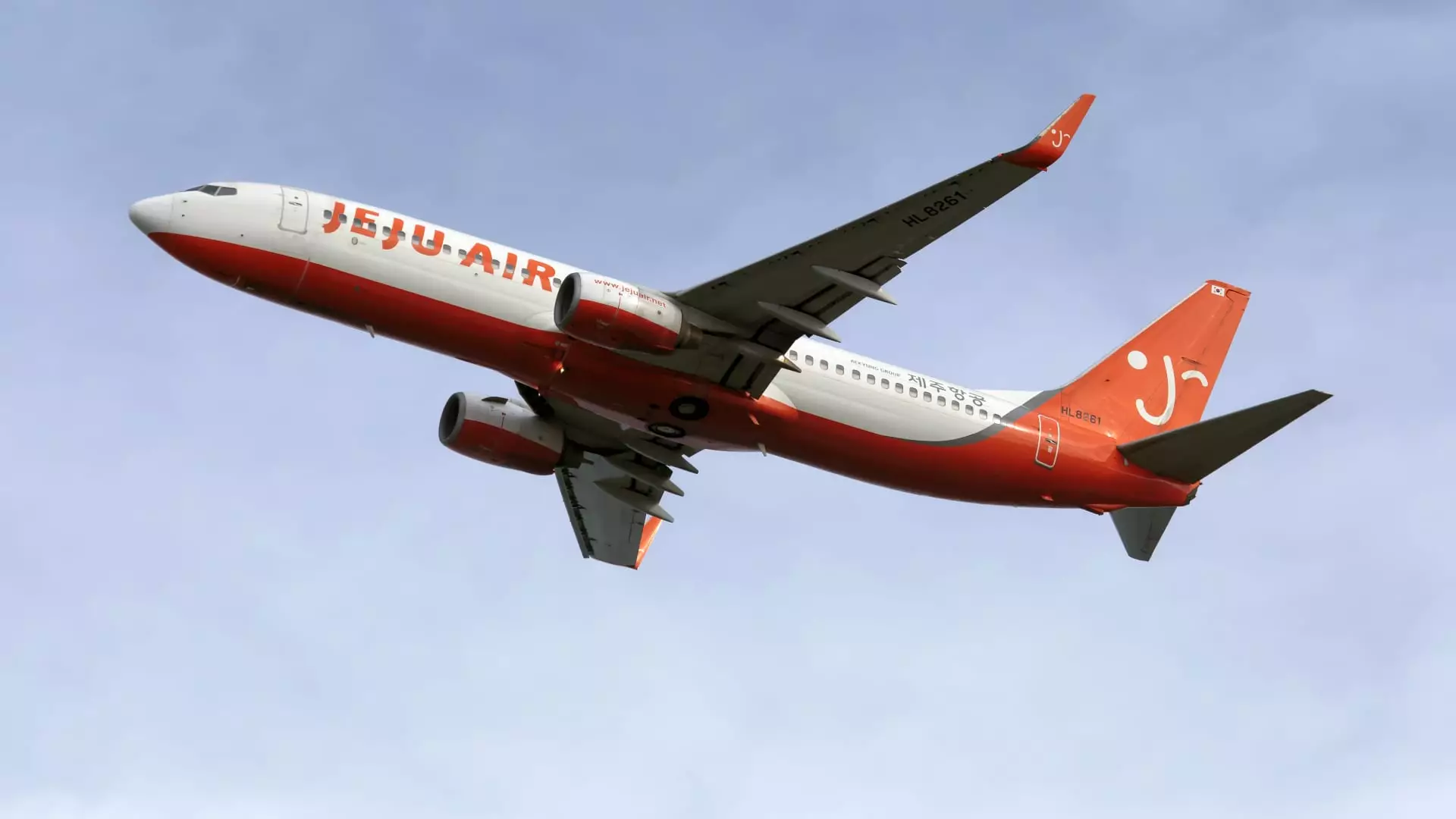In a catastrophic turn of events, a Jeju Air flight, designated 7C2216, made headlines when it belly-landed at Muan International Airport without its landing gear deployed. This tragic incident has resulted in a devastating loss of life, claiming the lives of 179 individuals onboard, save for two survivors. As the nation grapples with one of the worst aviation disasters in decades, investigators are now tasked with unraveling the factors contributing to this calamity. Such occurrences are especially shocking given the otherwise stellar safety record associated with commercial aviation in South Korea.
At the heart of this incident lies the Boeing 737-800, a model renowned for its reliability and widespread usage across global airlines. With nearly 4,400 units in operation and a substantial 17% share of the worldwide commercial jet fleet, the Boeing 737-800 has been the backbone of many airline operations, including low-cost carriers. Delivered to Jeju Air in 2017, the aircraft was not a rookie in terms of service; it had been previously operated by Ryanair and was around 15 years old at the time of the accident.
Historically, aircraft undergo rigorous upkeep and inspections, ensuring they meet safety standards even as they age. However, as this tragedy unfolds, questions arise regarding the condition and operational integrity of this specific aircraft, might it have been subjected to unnoticed mechanical issues or operational oversights that culminated in this disaster.
In the wake of the incident, South Korea’s acting president, Choi Sang-mok, ordered an urgent inspection of the nation’s fleet of Boeing 737-800s as a precautionary measure. Investigators face the immense challenge of piecing together the events leading up to the fateful landing attempt. Aerospace experts express skepticism regarding the likelihood of discovering a design flaw within the aircraft’s long-established framework, given its extensive service history. Richard Aboulafia, a prominent aerospace consultant, emphasizes the improbability of a design defect emerging, shifting the focus to operational oversights or external factors.
The complex nature of air accident investigations means that conclusions might take longer than anticipated. One of the perplexing issues investigators are seeking to understand is why the aircraft’s landing gear failed to deploy during the landing approach. Investigative teams will analyze cockpit recordings, maintenance logs, and pilot protocols to identify any lapses in judgment, technical failures, or exceptional circumstances.
One proposed theory surfacing during investigations points to a potential bird strike disabling the aircraft’s engines. Should this theory be substantiated, it could illuminate a series of dire scenarios that unfolded in the moments leading to impact. Jeff Guzzetti, a seasoned air safety investigator, posits that should an emergency situation develop quickly, pilots may not have adequate time to execute standard emergency procedures, potentially exacerbating the crisis.
The investigation will also scrutinize the circumstances surrounding the flight path. If the aircraft unexpectedly faced obstacles approaching the runway, the crash’s outcome might have differed considerably. Experts posit that if the aircraft had not collided with a hard surface at the end of the runway, the chances of survival among passengers could have improved.
As investigators sift through the remnants of this airplane disaster, the complexities of aviation safety take center stage. Although the incident has sparked fears and concerns over aircraft reliability, it is essential to approach this tragedy with a nuanced understanding of the factors at play. The interplay between human error, mechanical failure, and unforeseen circumstances must be meticulously examined.
This disaster serves as a poignant reminder of the importance of rigorous safety measures and protocols in aviation. While the Boeing 737-800 is generally trusted, safety in air travel is a collective responsibility involving manufacturers, airlines, regulatory agencies, and flight crews working tirelessly to ensure the well-being of millions who rely on air travel each day. Moving forward, the lessons drawn from this incident will hopefully reinforce the aviation industry’s commitment to safety and innovation.

Leave a Reply